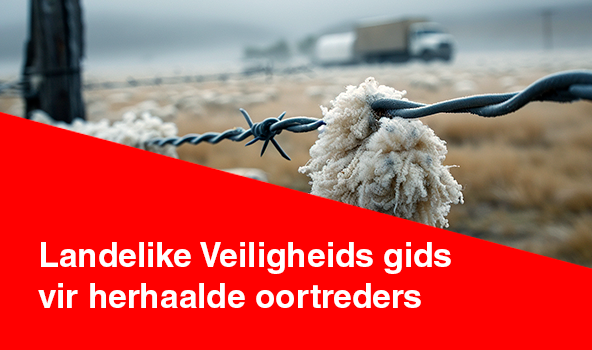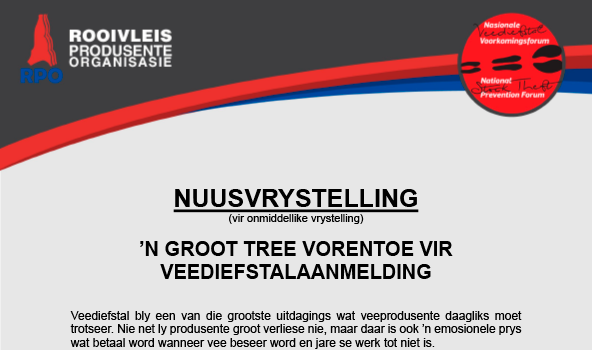FOOTROT
admin
Oktober 8, 2024

FOOTROT
(By Jacques Jansen van Vuuren)
Lameness in sheep is a big problem in South African sheep flocks, especially in the higher rainfall areas of the country. It is a cause of discomfort and pain as well as a source of economic loss in the sheep industry. Animals with lameness cannot graze properly and can also not compete for food.
The results of lameness in sheep are:
- Loss of body condition.
- Lower lambing percentages.
- Lower birth mass, which has a detrimental effect on lamb survival.
- Loss in milk production.
- Fertility of rams are lower.
- Poorer wool growth.
The most important to always do first, is to confirm that the problem is footrot, caused by the bacteria Dichelobacter nodosus. Other common causes of lameness are bluetongue, ticks, foot abscesses, strawberry footrot (caused by the germ Dermatophilus congolensis), postdip lameness (caused by the germ Erisypelas rhusiopathiae) and selenium deficiencies (especially lambs).
In winter the majority are foot abscesses, strawberry footrot, acidosis (sheep on lands) and laminitis (incorrect supplementary feeding).
The bacteria
(Dichelobacter nodosus)
causing foot rot, live on
the feet of infected animals
showing to be lame or
normal.
The bacteria (Dichelobacter nodosus) causing foot rot, live on the feet of infected animals showing to be lame or normal.
It is calculated that D. nodosus can survive for a maximum of 7-10 days on pastures and up to six weeks on trimmed hooves under optimal conditions.
It can even survive up to three years in the hooves of live sheep, which will then be carriers. The organism survives best in warm (>10⁰C), wet environments (normally more than 50mm rainfall). Infected sheep therefore are the main source of infection for other sheep, although spreading of the bacteria from one sheep to another can also occur via the surface on which they stand or walk (Whittington, 1995). D. nodosus is present in anaerobic conditions, e.g. mud.
| Footrot | Heel abscess | Toe abscess |
|---|---|---|
| Affects more than one foot. | Normally affects one back foot. | Affects front feet. |
| No swelling. | Swelling normally divides toes. | No or little swelling. |
| No pus emerges, but a black-grey slimy liquid may occur. | White creamy excretions. | Liquid can be excreted where feet are trimmed. |
| Hooves can be warm. | Warm at the touch. | Can be warm. |
| Cuts and abscesses have a bad odour and may be covered with flies. | Cuts and abscesses may have a subtle odour, but flies are seldom present. | Odour present, but different to foot rot. Flies might be present. |
| Spread fast under all ages of animals, especially under favourable conditions. | Normally heavier animals, e.g. rams and pregnant ewes. | All animals. |
| No cuts in the coronary skin, but the sensitive inner horn separates from the hard outer horn. | Abscesses normally present at the coronary skin or the interdigital skin. | Abscesses normally under the horn of front of the toe. Can form a line above the coronary band. In chronic cases the front part of the sole can separate from the rest. |





